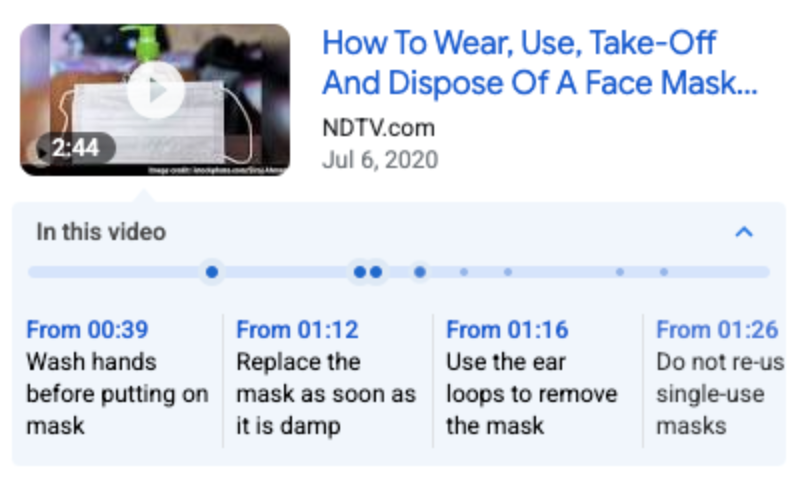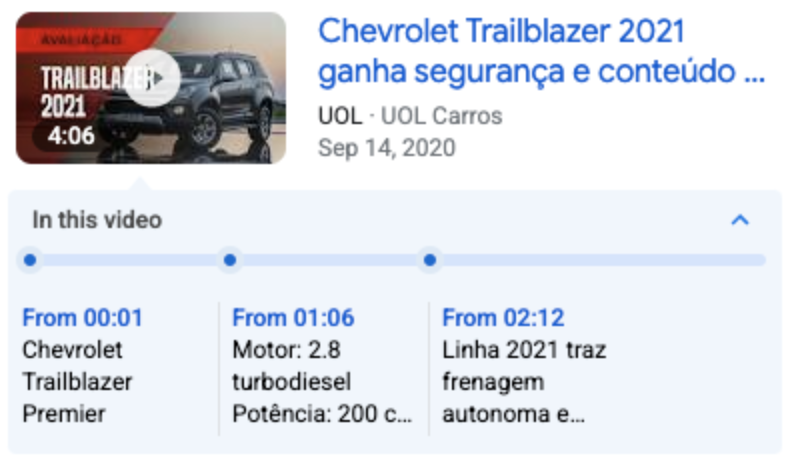2021 年 7 月 19 日(月曜日)
2019 年に最初にリリースされて以来、動画の主な出来事機能は拡張と改善が続けられてきました。デザインを進化させ、Google 検索を利用できるすべての地域で、モバイルやパソコンなどで より多くの動画に主な出来事を表示できるようにしました。主な出来事を利用することで、より多くの検索ユーザーが書籍の章のように動画セグメント間を移動して、最も関連性の高いセグメントを直接見つけることができます。
本日、各セグメントに手動でラベルを付けることなく、サイト上の動画の主な出来事を有効にする新しい方法をリリースします。動画内の特定のタイムスタンプに移動するための URL パターンを Google に知らせるだけで、Google は AI を使用して動画の主な出来事を特定し、該当部分への直接リンクを検索結果に表示することができます。


Google は Google I/O で SeekToAction のベータ版テストを発表していましたが、現在この機能のベータ版が終了し、動画のあるすべてのサイトでこのマークアップがサポートされるようになりました。このマークアップを実装する際は、次のヒントを参考にしてください。
- URL には、動画の開始時点以外の時点にディープリンクを設定する機能が必要です。たとえば
https://www.example.com/example?t=30は、開始後 30 秒の時点から再生されます。 - 主な出来事として自動的に認識されたいすべての動画ページで
SeekToActionマークアップを使用し、その他のガイドラインに準拠します。詳しくは、こちらの例をご覧ください。 - 動画内の主な出来事が自動的に認識されるためには、Google が動画コンテンツ ファイルを取得できる必要があります。
SeekToAction マークアップは、ご自身のサイトに埋め込まれた動画にのみ適用されます。schema.org マークアップを制御できないサードパーティのプラットフォームに動画を投稿する場合は、そのプラットフォームに問い合わせて、このマークアップがサポートされているかどうかをご確認ください。
SeekToAction マークアップを、主な出来事を有効にしてユーザーが動画により深く没頭できるようにするための、手軽で効率的な方法としてご活用いただければ幸いです。ご不明な点がございましたら、フォーラムで質問を投稿するか、Twitter で @googlesearchc にお問い合わせください。ドキュメント ページから直接フィードバックを送信することもできます。
